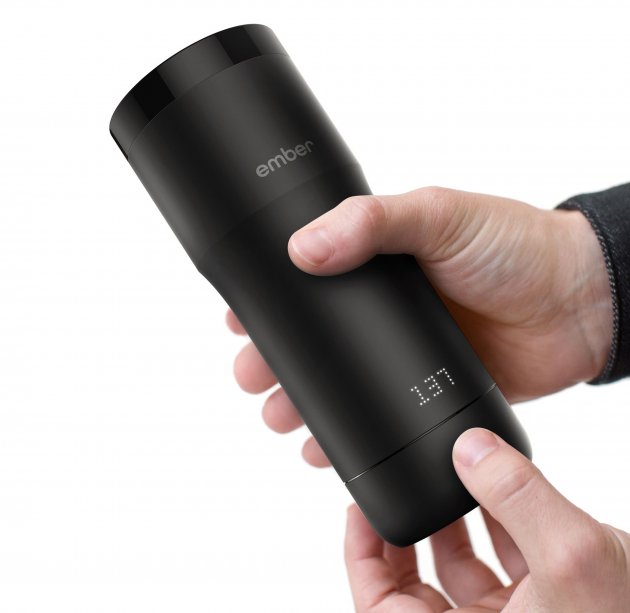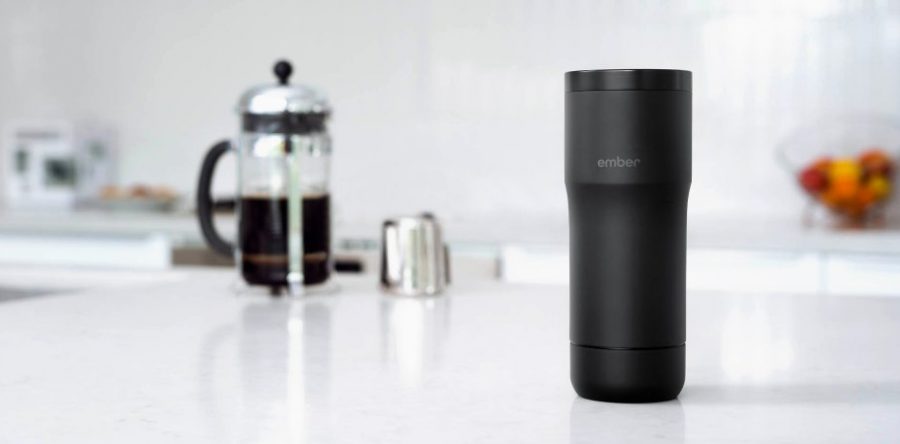Why This Inventor Wants to Connect All of Your Dishes to the Internet
Clay Alexander envisions a world in which all your dishware is smart--and it starts with his coffee mug.
By Kevin J. Ryan, April 2016, <Article Source>
Clay Alexander had spent the past three years of his life thinking about heat. It was 2009; earlier that year, he had sold his first invention, the energy-saving Infusion light bulb, to General Electric.
It was then that, in his kitchen one morning, he looked down at his breakfast. "OK, this is the 21st century," he said to his wife. "Why are my eggs getting cold on my plate?"
To solve the problem, he started strapping batteries and circuitry to the bottom of household dishes. "It worked," Alexander says. "I'd get to the very last bite of salmon, cut it, and steam would come out."
That concept became the driving force behind Ember, the company Alexander officially launched in 2012 to make heat-controlling dishware. But Alexander's ambitions go beyond simply keeping your food and drink warm; this is an internet-of-things play, where his "smart" dishes collect all kinds of data on you.
Ember's first product, a temperature-controlling mug, will be released this July. It lets coffee and tea drinkers set the temperature of their liquid and keep it that way for two hours. A rotating dial at the base of the mug adjusts the temperature between 120 and 150 degrees. The mug's LED temperature display is completely hidden until the coffee drinker taps the Ember logo; the temperature glows on the mug's face, and within seconds, it fades to black. The $149 device is the first in a line of products Alexander wants to launch, which would include things like plates, bowls, and baby bottles.

Alexander's invention looks like a regular travel mug until the user turns the dial or taps the Ember logo.
Alexander's idea for the mug stayed in limbo until 2014, when he was finally granted the patents he'd applied for four years earlier. He raised $5 million from private investors and got to work. When Ember had difficulty shrinking the mug by the last few millimeters Alexander desired, he hired a team of cell phone engineers from companies like Nokia and Amazon. "If I made this exact invention back then--oh man, it would be a lot larger in size," he says. The temperature-controlling technology uses sensors in several locations throughout the mug, and the heating system kicks in if the liquid inside drops below the desired level. If the liquid is too warm, a wax-like substance within the walls absorbs heat--which can then be transferred back into the liquid once the mug's battery runs out. To charge it back up, you simply place the mug on the included wireless charging coaster.
Alexander hired San Francisco-based Ammunition Group, the design firm behind Beats headphones and the recently reimagined Polaroid cameras, to create the aesthetic. It's a design that he clearly thinks highly of, as he casually refers to it as "the most beautifully designed travel mug on the planet" and "an object of desire."
It's also an object with aspects that suggest the internet-of-things trend may have jumped the shark. Don't want to bother unscrewing the lid to see how much coffee you have left? Not to worry. Alexander delayed shipping the mug earlier this year so he could connect it to an app that will send you notifications when you're running low. You can even set the temperature from a different room or location because, you know, your coffee should stay hot even when you're not around to drink it.
Temperature-controlling dishware is useful, though clearly the problem it solves is a very First-World one. Where things get interesting is in Ember's smart technology and the startup's longer-term plan.
Alexander wants the Ember mug to connect to a map that, when the level of liquid inside gets low, shows coffee shops nearby. He also plans on having the app track a user's coffee consumption over the course of days and weeks. This could then tie in to health apps, created either by Ember or in partnership with ones that already exist, to help coffee drinkers track and understand their caffeine consumption.
It's similar to Kevin Plank of Under Armour's mission to connect his clothing directly to fitness apps. Plenty of wearable-connected health apps track how much exercise users get, but nutrition tracking is still very manual--users have to enter that data themselves. Ember's idea to track this automatically provides a glimpse into a future of nutrition that is monitored passively--by smarter products that create healthier people. Users could easily track things like calories and fat, as well as ingredients that have direct and immediate effects on people's health, like sugar for diabetics or alcohol for anyone who needs to cut back.
Ember currently has five patents, and Alexander wants that number to reach 100 within four years. But it all starts with Alexander's object of desire, which he and his designers have carefully perfected.
"I needed our flagship product to be as beautiful as possible," he says. "I knew that was necessary for Ember to be a successful, massive brand--which is my long-term goal."




